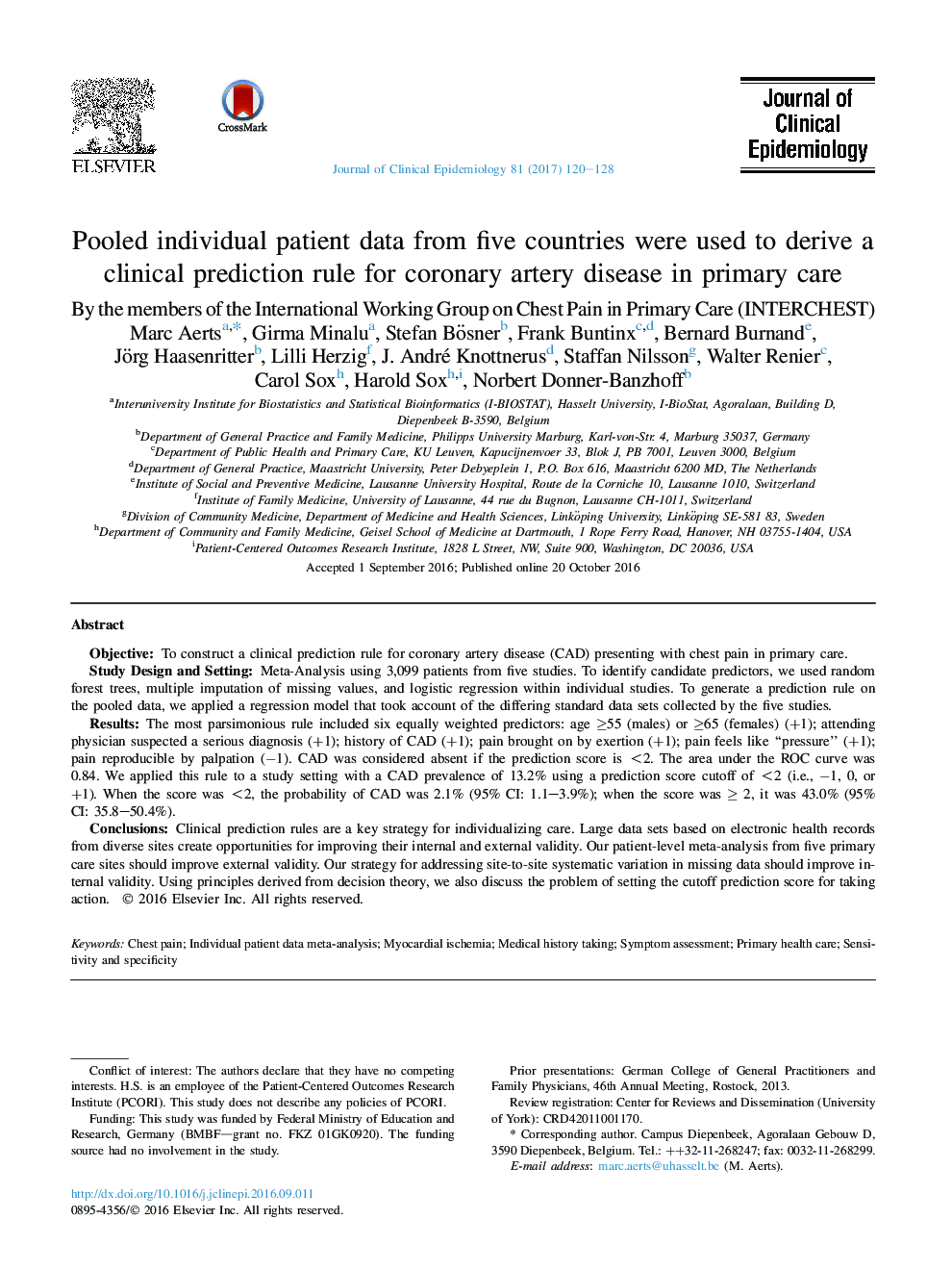| کد مقاله | کد نشریه | سال انتشار | مقاله انگلیسی | نسخه تمام متن |
|---|---|---|---|---|
| 5121857 | 1486845 | 2017 | 9 صفحه PDF | دانلود رایگان |
ObjectiveTo construct a clinical prediction rule for coronary artery disease (CAD) presenting with chest pain in primary care.Study Design and SettingMeta-Analysis using 3,099 patients from five studies. To identify candidate predictors, we used random forest trees, multiple imputation of missing values, and logistic regression within individual studies. To generate a prediction rule on the pooled data, we applied a regression model that took account of the differing standard data sets collected by the five studies.ResultsThe most parsimonious rule included six equally weighted predictors: age â¥55 (males) or â¥65 (females) (+1); attending physician suspected a serious diagnosis (+1); history of CAD (+1); pain brought on by exertion (+1); pain feels like “pressure” (+1); pain reproducible by palpation (â1). CAD was considered absent if the prediction score is <2. The area under the ROC curve was 0.84. We applied this rule to a study setting with a CAD prevalence of 13.2% using a prediction score cutoff of <2 (i.e., â1, 0, or +1). When the score was <2, the probability of CAD was 2.1% (95% CI: 1.1-3.9%); when the score was ⥠2, it was 43.0% (95% CI: 35.8-50.4%).ConclusionsClinical prediction rules are a key strategy for individualizing care. Large data sets based on electronic health records from diverse sites create opportunities for improving their internal and external validity. Our patient-level meta-analysis from five primary care sites should improve external validity. Our strategy for addressing site-to-site systematic variation in missing data should improve internal validity. Using principles derived from decision theory, we also discuss the problem of setting the cutoff prediction score for taking action.
Journal: Journal of Clinical Epidemiology - Volume 81, January 2017, Pages 120-128
